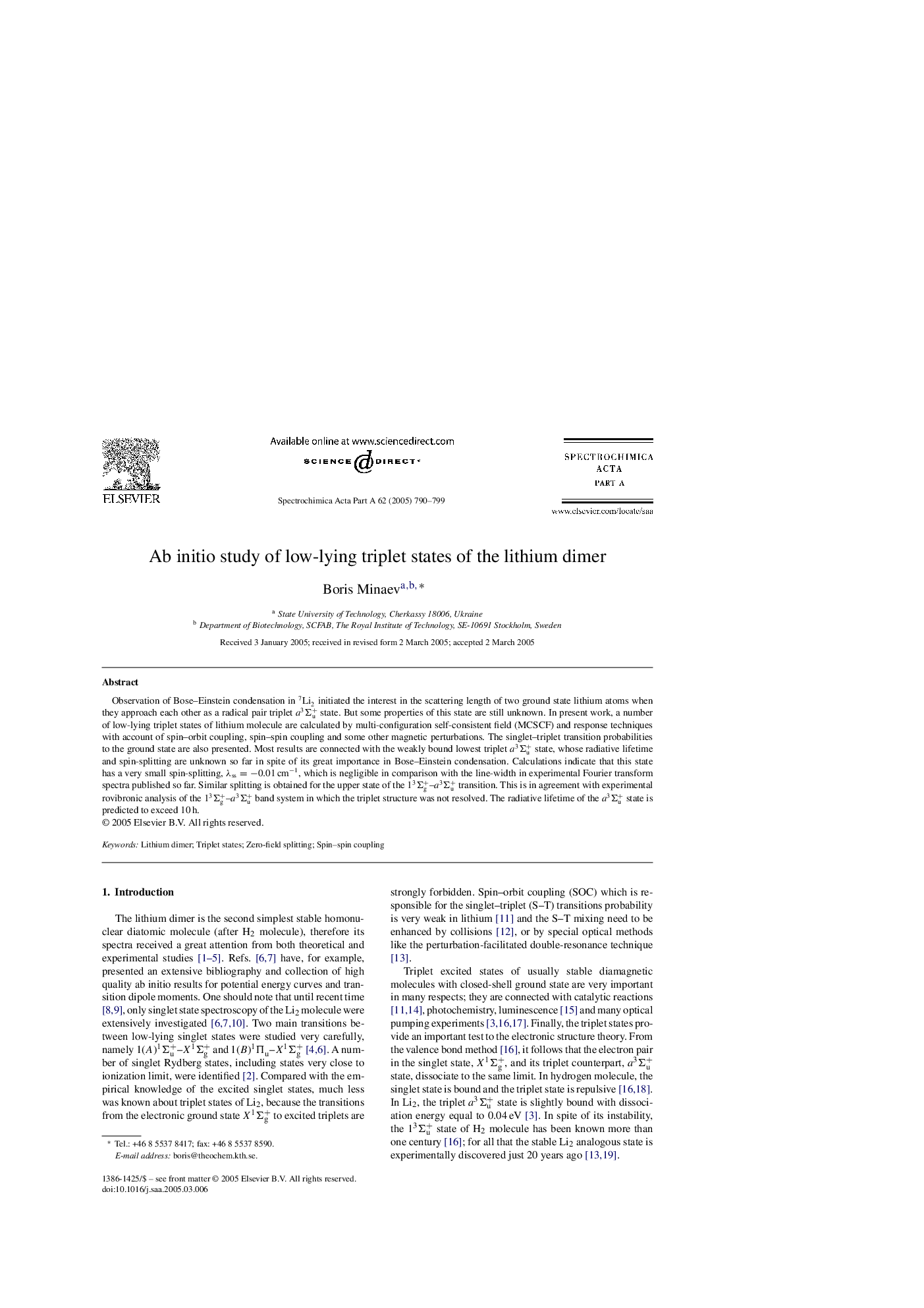| Article ID | Journal | Published Year | Pages | File Type |
|---|---|---|---|---|
| 9756915 | Spectrochimica Acta Part A: Molecular and Biomolecular Spectroscopy | 2005 | 10 Pages |
Abstract
Observation of Bose-Einstein condensation in Li27 initiated the interest in the scattering length of two ground state lithium atoms when they approach each other as a radical pair triplet aΣu+3 state. But some properties of this state are still unknown. In present work, a number of low-lying triplet states of lithium molecule are calculated by multi-configuration self-consistent field (MCSCF) and response techniques with account of spin-orbit coupling, spin-spin coupling and some other magnetic perturbations. The singlet-triplet transition probabilities to the ground state are also presented. Most results are connected with the weakly bound lowest triplet aΣu+3 state, whose radiative lifetime and spin-splitting are unknown so far in spite of its great importance in Bose-Einstein condensation. Calculations indicate that this state has a very small spin-splitting, λss=â0.01 âcmâ1, which is negligible in comparison with the line-width in experimental Fourier transform spectra published so far. Similar splitting is obtained for the upper state of the 1Σg+3ââaΣu+3 transition. This is in agreement with experimental rovibronic analysis of the 1Σg+3ââaΣu+3 band system in which the triplet structure was not resolved. The radiative lifetime of the aΣu+3 state is predicted to exceed 10âh.
Related Topics
Physical Sciences and Engineering
Chemistry
Analytical Chemistry
Authors
Boris Minaev,
